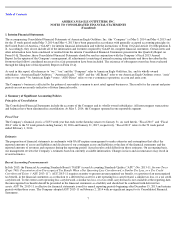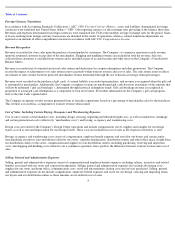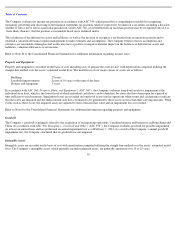American Eagle Outfitters 2013 Annual Report Download - page 18
Download and view the complete annual report
Please find page 18 of the 2013 American Eagle Outfitters annual report below. You can navigate through the pages in the report by either clicking on the pages listed below, or by using the keyword search tool below to find specific information within the annual report.
Table of Contents
As of May 3, 2014, the Company had 16.6 million shares available for all equity grants.
10. Income Taxes
The provision for income taxes from continuing operations is based on the current estimate of the annual effective income tax rate and is
adjusted as necessary for quarterly events. The effective income tax rate from continuing operations based on actual operating results for the
13 weeks ended May 3, 2014 was 57.6% compared to 38.0% for the 13 weeks ended May 4, 2013. The increase in the effective income tax rate
this year is primarily due to valuation allowances on foreign losses.
The Company records accrued interest and penalties related to unrecognized tax benefits in income tax expense. The Company recognizes
income tax liabilities related to unrecognized tax benefits in accordance with ASC 740 and adjusts these liabilities when its judgment changes as
the result of the evaluation of new information not previously available. Unrecognized tax benefits did not change significantly during the
13 weeks ended May 3, 2014 and May 4, 2013. Over the next twelve months, the Company believes that it is reasonably possible that
unrecognized tax benefits may decrease by approximately $8 million due to settlements, expiration of statute of limitations or other changes in
unrecognized tax benefits.
11. Legal Proceedings
The Company is subject to certain legal proceedings and claims arising out of the conduct of its business. In accordance with ASC 450,
Contingencies (“ASC 450”), management records a reserve for estimated losses when the loss is probable and the amount can be reasonably
estimated. If a range of possible loss exists and no anticipated loss within the range is more likely than any other anticipated loss, the Company
records the accrual at the low end of the range, in accordance with ASC 450. As the Company believes that it has provided adequate reserves, it
anticipates that the ultimate outcome of any matter currently pending against the Company will not materially affect the consolidated financial
position or results of operations of the Company.
17
























